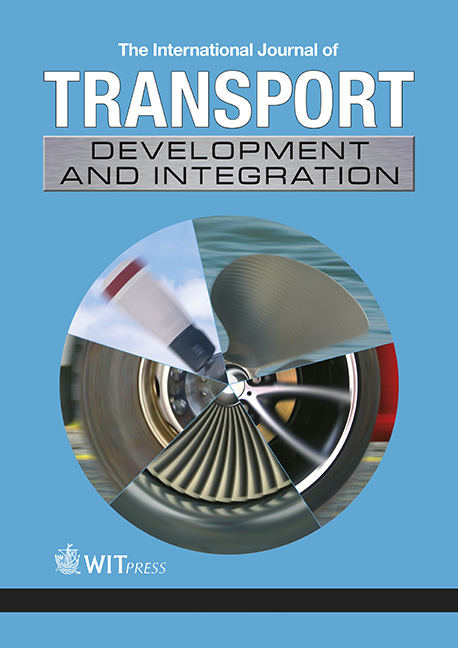Characterization of road traffic externalities in an intercity corridor
Price
Free (open access)
Volume
Volume 3 (2019), Issue 3
Pages
9
Page Range
222 - 231
Paper DOI
10.2495/TDI-V3-N3-222-231
Copyright
WIT Press
Author(s)
Carlos Sampaio, Eloísa Macedo, Margarida C. Coelho, Jorge M. Bandeira
Abstract
This paper aims at evaluating road transport externalities in an intercity corridor taking into account the energetic and economic characterization of the available road transport modes: intercity bus, individual transport and shared mobility. One of the purposes of this analysis is to identify the external costs (EC) and private costs (PC) of each mode/route and to which extent the best environmental option can be also considered as the best economical option. Results show the intercity bus at full or half occupancy is the best option in terms of EC, followed by the shared mobility. Regarding the PC, results suggest that the best option is the shared mobility along route 1 (motorway), followed by the intercity bus. When comparing both routes, route 1 has less PC than route 2 (national road). In order to reduce the overall environmental impacts of a transport system, one solution might be the reduction of the EC through an optimization of the PC, ensuring that the option with less EC is also the option with less PC, so that it can encourage users to choose routes and transport modes with less environmental impacts.
Keywords
externalities costs, intercity bus, intercity corridors, private costs, shared mobility




